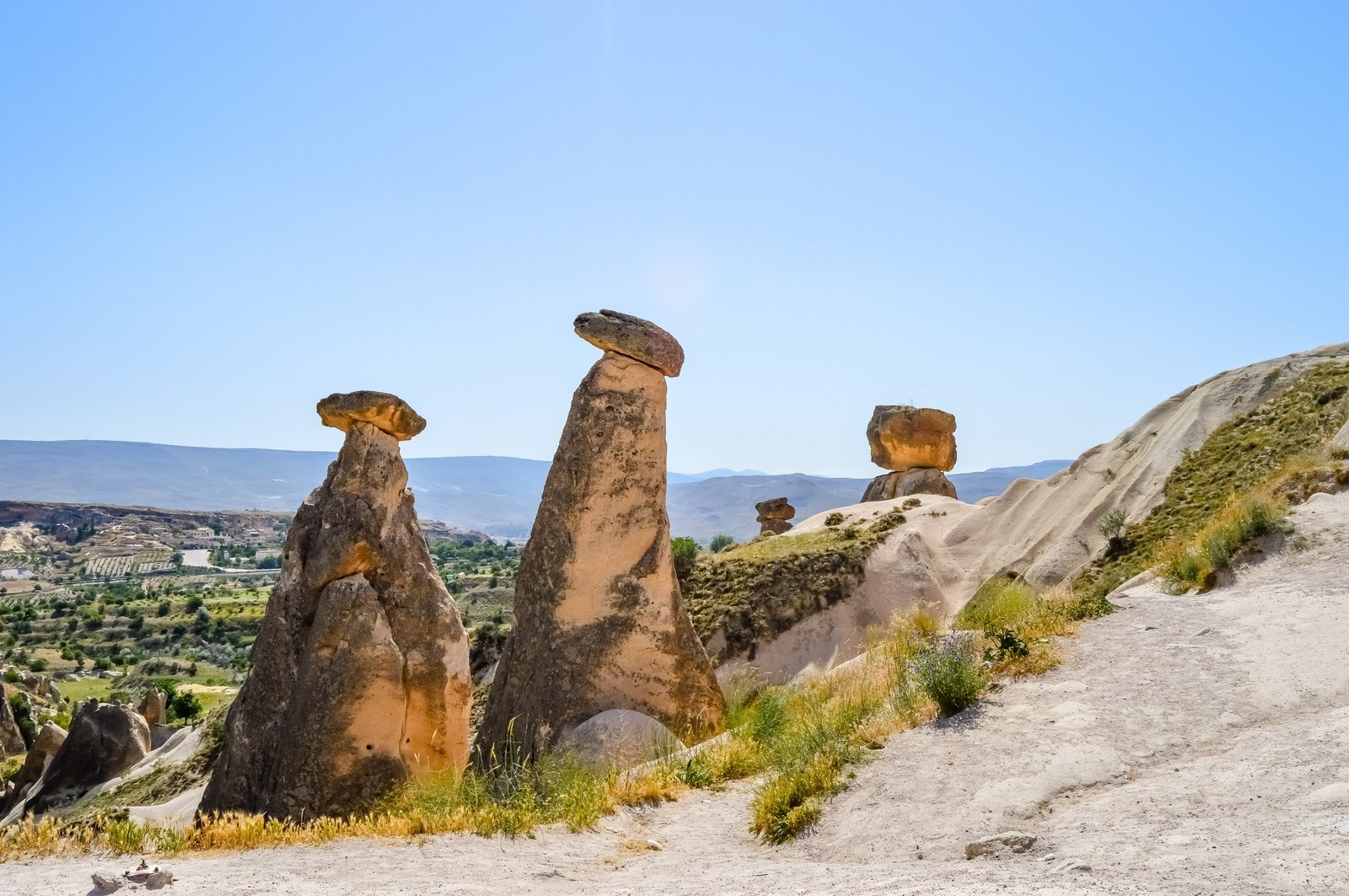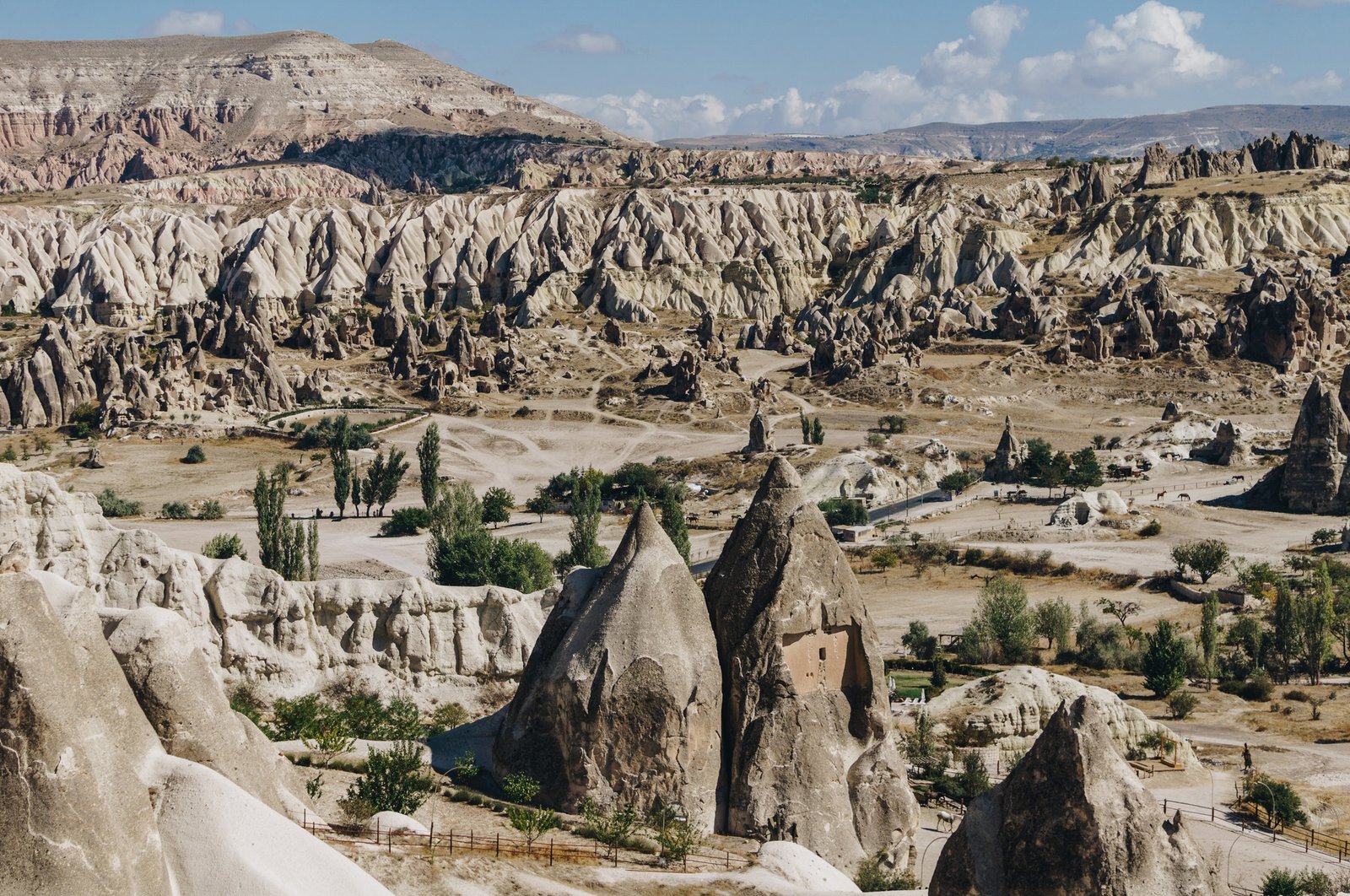Cappadocia, a region in central Turkey, is renowned for its surreal landscapes, historical significance, and most famously, the Fairy Chimneys in Cappadocia. These extraordinary rock formations draw countless visitors each year, leaving them in awe of their mystical beauty and curious about their origins.
But how exactly did these majestic structures come to life? This blog will explore the fascinating geology of the Fairy Chimneys in Cappadocia, unraveling the natural forces and geological processes that shaped them into what we see today. You’ll also discover why these formations hold cultural and historical significance, making them a must-visit destination.
Understanding the Fairy Chimneys in Cappadocia
What Are Fairy Chimneys?
Fairy Chimneys are tall, thin spires of rock that rise dramatically from the earth. These formations vary in height but can reach up to 130 feet (40 meters). They are distinguishable by their unusual shapes, often topped by a more resistant rock that creates a cap-like structure. Although they appear otherworldly, fairy chimneys are a natural wonder shaped over thousands of years by the forces of erosion.
Visitors might liken them to something straight out of a storybook, hence the enchanting name. While they are found in several parts of the world, the chimneys in Cappadocia are particularly striking due to their density and unique setting against a backdrop of valleys and historic caves.
The Geological Setting
Cappadocia is situated within the Central Anatolian Plateau and owes its remarkable geology to its volcanic origins. Two extinct volcanoes, Mount Erciyes and Mount Hasan, played an essential role in forming the foundation of the region. Millions of years ago during the late Miocene epoch, these volcanoes erupted with powerful force, blanketing the area with thick layers of volcanic ash, lava, and sediment.
Over time, the materials compressed into a soft rock known as “tuff,” while layers of basalt and harder volcanic rock formed on top. These contrasting rock types set the stage for the creation of the fairy chimneys when natural erosion acted on them.
The Formation of Fairy Chimneys
Step 1: Volcanic Activity Lays the Groundwork
The story of Fairy Chimneys starts around 10 million years ago. Repeated volcanic eruptions created thick deposits of soft tuff interspersed with harder layers of basalt and andesite. These deposits originally covered the landscape uniformly, creating a flat plateau.
Step 2: Water and Wind Erode the Landscape
Nature then took on the role of sculptor. Rainfall began wearing down the softer tuff, carving out deep cracks and valleys. At the same time, the harder rock layers resisted erosion, forming protective caps. Wind erosion partnered with water to shape the fairy chimneys further, refining their pointed spire-like forms over millennia. These natural forces gradually turned the flat volcanic plateau into the dramatic, otherworldly landscape we see today.
Step 3: The Role of Differential Erosion
Differential erosion—where softer rock wears away faster than tougher rock—played a critical role in shaping the fairy chimneys. The harder rocks that form the caps shield the underlying tuff from erosion, helping to maintain their chimney-like shape. Without these protective caps, the spires would eventually erode away completely.
The Cultural and Historical Significance of Fairy Chimneys
The Fairy Chimneys in Cappadocia are more than a geological marvel; they’ve also served practical and cultural purposes for centuries.
A Safe Haven for Early Christians
During the Byzantine period, early Christians sought refuge in Cappadocia to escape persecution. The soft tuff of the fairy chimneys allowed them to carve out intricate homes, churches, and monasteries, many of which are still standing today. These cave dwellings feature frescoes, hidden chambers, and even underground cities, providing a glimpse into the lives of those who once called these formations home.
A Modern Tourism Hotspot
Today, Cappadocia and its iconic Fairy Chimneys are a UNESCO World Heritage Site and a bucket-list destination for travelers. Visitors can explore the rock-hewn churches in the Göreme Open-Air Museum, enjoy hot air balloon rides over the scenic valleys, and even stay in luxurious cave hotels.
The chimneys are not just natural wonders but also symbols of adaptability and human ingenuity, bringing together nature and culture in perfect harmony.
Can We Find Similar Formations Elsewhere?
While the Fairy Chimneys in Cappadocia are perhaps the most famous, similar formations exist around the world in places like Bryce Canyon National Park in the United States and Serbia’s Davolja Varos. However, each location has unique geological attributes that give its fairy chimneys distinct shapes and characteristics.
The fairy chimneys in Bryce Canyon, for example, are called “hoodoos” and are mainly formed from sedimentary rock, while those in Cappadocia are volcanic in origin. These differences make the fairy chimneys in Cappadocia a one-of-a-kind geologic spectacle.
Protecting Cappadocia’s Unique Geology
Unfortunately, the Fairy Chimneys in Cappadocia are not immune to the impact of human activity and environmental changes. Increased tourism has led to wear and tear on the fragile structures, and climate change poses additional risks. The local government and UNESCO continue to work together to implement conservation measures aimed at preserving this geological treasure for future generations.
Why You Should Visit the Fairy Chimneys in Cappadocia
A visit to Cappadocia feels like stepping into another planet. Between the unique geology, the deep historical and cultural roots, and the breathtaking views, the Fairy Chimneys in Cappadocia offer an unforgettable experience. Whether you’re a geology enthusiast, a history buff, or simply a traveler in search of wonder, these formations are sure to leave you spellbound.
Plan Your Trip Today
Cappadocia is waiting for you. Whether it’s exploring rock-hewn churches, savoring local wines, or enjoying a sunrise hot air balloon ride, the backdrop of the Fairy Chimneys will make every moment magical. Start planning your visit now and witness one of nature’s most extraordinary creations.

